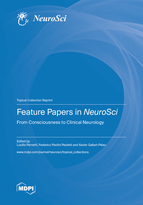Neural Assemblies as Precursors for Brain Function
Round 1
Reviewer 1 Report
This manuscript introduces a thoughtful model for explaining cognition and the accompanying neural representations. However, NeuroSci has a focus on original research and reviews:
https://www.mdpi.com/journal/neurosci/about
While the manuscript is an interesting conceptual-based paper, it would match better with a submission that is a concept or hypothesis article type. There should be venues for this kind of study at other journals. This particular journal is expected to favor studies with a greater grounding in the biological or psychological sciences, including a stronger connection between mechanisms and a concept.
In other words, in its current form, the manuscript tends towards a more abstract explanation of cognition. One recommendation is to ground the abstractions on clearer examples, such as a real activity and what is known on how the brain responds to the activity. This would provide a more mechanistic grounding for some of the concepts. The concepts without firm grounding can be set aside.
This is not to say that abstract concepts are not appropriate in themselves. If there is an area where an abstract concept is grounded in mathematics and theory, then the concept has grounding, such as papers by the author in the area of computer science.
The author's paper titled "New Ideas for Brain Modelling" has these elements and is a better template for a conceptual-based paper. I strongly suggest the author to better blend past knowledge with the current concepts, and how they are specifically grounded in biology or psychology, and possibly relate them to cognition, as the author has done in past work.
This review is just one opinion. I hope the author considers these suggestions as potential improvements of the communication of the paper to this journal and not as a definitive criticism on the model itself or the efforts.
Author Response
Please see the attachment.
Author Response File: ![]() Author Response.pdf
Author Response.pdf
Reviewer 2 Report
The paper is a review of a number of neural representations of human intelligence, with separate sections for each neural assemble model. While these sections are informative, the author needs to help the reader better understand the uniqueness of each model and how they compare and contrast. At present, the sections tend to stand alone and therefore require transitions for the reader to appreciate the authors intended path to understanding and how each section addresses, or fails to address various aspects of brain processing from that perspective.
The keyword lists could be expanded to help the reader focus on the topics to be described or at least replace the overly general terms with greater specificity.
The paper as a whole may be attempting to cover too many topics within many of the sections, without enough detail to see how they each subcomponent contributes to that worldview. At a glance, I see over two dozen neurological concepts mentioned, somewhat in passing. As a result, the paper needs to have greater attention on overall focus and internal connections to facilitate better flow between topics.
In conclusion, this area of study and the overview of these varying models represent a crucial topic for readers. Please accept these comments as aids in helping your audience more clearly see the path you yourself have explored. This may also require that you add more detail related to your own model instead of using as many outside references. I personally found the introduction of “self-representation” in the abstract enticing and appreciated seeing a similar reference in your conclusion, “…..a cell or organism evolves, not only to survive, but also by expressing itself.”
Author Response
Please see the attachment.
Author Response File: ![]() Author Response.pdf
Author Response.pdf
Round 2
Reviewer 1 Report
Thank you for the revisions. I believe the current manuscript requires a reviewer with better familiarity with the concepts of the manuscript, so I would like to defer to other reviewers so the author has the benefit of their advice. I checked major revisions again since there is not an option for the recommendation as shown above. Best wishes to the author.
Reviewer 2 Report
The edits made to the second submmission enhanced the readability and paper flow. thank you






